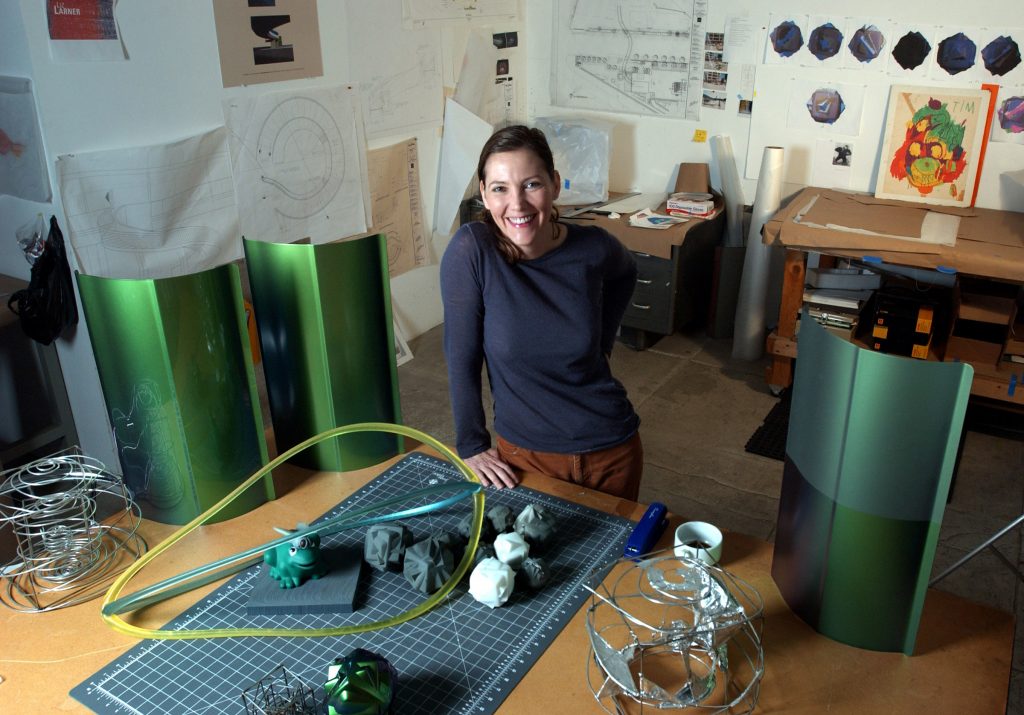Art World
‘We’re Not Used to Seeing Colors Distort Form’: Watch Artist Liz Larner Explain Her Rule-Bending Abstract Sculpture
As part of a collaboration with Art21, hear news-making artists describe their inspirations in their own words.

As part of a collaboration with Art21, hear news-making artists describe their inspirations in their own words.

Caroline Goldstein

For the last three decades, California-based artist Liz Larner has been pushing the limits of what constitutes sculpture. Early in her practice, the artist experimented with agar cultures, which she asked other artists to breathe on, and then displayed the Petri Dishes as the bacteria grew, bloomed, and died.
If that can be a sculpture, there really are no bounds. Larner has been proving that ever since.
Working with materials ranging from the traditional—like bronze and steel—to the absurd—like eyelashes and volcanic ash—Larner’s sculptures also run the gambit. Some are jovial and quirky; some are hulking and menacing. Right now at SculptureCenter in New York, the largest survey of Larner’s work since 2001 is on view, titled “Liz Larner: Dont put it back like it was,” including thirty works spanning 1987 to 2021.
The show positions Larner’s work, which reflects the history of sculptural installation and experimentation, viewed through both a social and a gendered lens—male artists dominate the post-minimal landscape of sculpture, which affected the critical reception of Larner’s work throughout her career. For Larner though, concerns about form, color, and volume have always been at the forefront.
In an exclusive interview filmed as part of Art21’s Extended Play series back in 2017, we get a window into the way Larner approaches space in her discussion of Tony Smith’s geometric work Smoke (1967), previously installed in an atrium at LACMA. “This was almost kind of like a dead space,” she says of LACMA’s atrium. “You would pass through, from here to there. And bringing this incredible sculpture into the space really changed it… Even if you have to hurry through the space, it’s still a great experience every time and from every angle.”
The video also features Larner’s own work Sculpture 6 (2010), at the Art Institute of Chicago. It appears to be a simple form, like two intersecting drawings of a three-dimensional box, painted in bright orange, white, and lilac, but tilted on its side. It’s ever so slightly off, seemingly bending into itself like rubber, although it’s made of steel.
“Color—it’s such a huge part of our perception” the artist tells Art21. “So to be able to use it as a material, and make it work volumetrically—and not use it just graphically—is something that’s very interesting to me.”
Watch the video, which originally appeared as part of Art21’s Art in the Twenty-First Century series, below. “Liz Larner: Don’t put it back like it was” is on view at SculptureCenter, New York, through March 28, 2022.
This is an installment of “Art on Video,” a collaboration between Artnet News and Art21 that brings you clips of newsmaking artists. A new series of the nonprofit Art21’s flagship series Art in the Twenty-First Century is available now on PBS. Catch all episodes of other series like New York Close Up and Extended Play and learn about the organization’s educational programs at Art21.org.